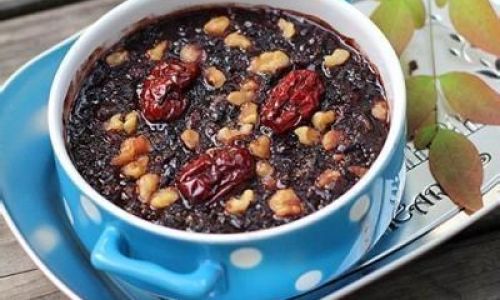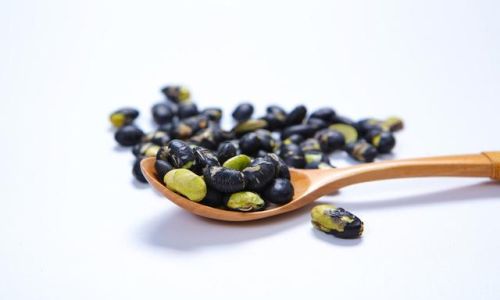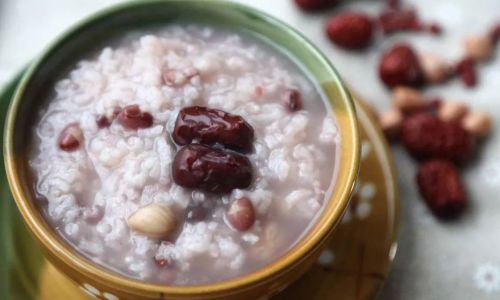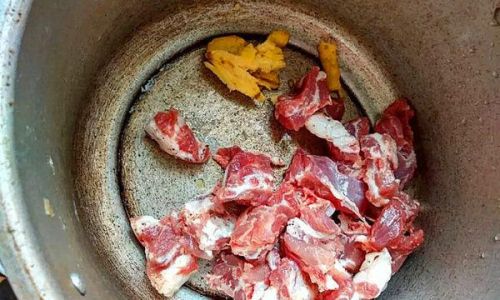Introduction
Breadcrumbs, those delicate, crumbly bits of stale bread, might seem like a simple byproduct of kitchen leftovers. However, they are far more than just a disposal method for hardened loaves. Breadcrumbs serve as a versatile ingredient in countless recipes, adding texture, flavor, and a touch of elegance to dishes ranging from meatballs and fried chicken to casseroles and desserts. Whether you’re looking to coat your favorite fried foods, thicken a sauce, or add a crunchy topping to your casserole, homemade breadcrumbs can elevate your cooking to new heights.

In this comprehensive guide, we’ll explore the art and science of making breadcrumbs. From selecting the perfect bread to storing your finished product, we’ll cover every step in detail, ensuring you can create perfect breadcrumbs every time. So, let’s dive into the world of breadcrumbs and discover how to make them at home.
Chapter 1: Choosing the Right Bread
The first step in making breadcrumbs is selecting the right bread. While any type of bread can be turned into crumbs, certain varieties offer better results depending on your intended use.
1 White Bread
White bread is a classic choice for breadcrumbs due to its mild flavor and soft texture. It works well in dishes where you want the breadcrumbs to blend seamlessly into the background, such as meatloaf or stuffing. White bread crumbs tend to be finer and more uniform, making them ideal for coating foods like chicken or fish.
2 Whole Wheat Bread
For a nuttier, heartier flavor, whole wheat bread is an excellent option. The coarse texture and robust taste of whole wheat breadcrumbs make them perfect for dishes like casseroles or gratins where you want the breadcrumbs to stand out. They also add a nutritional boost to your meals.
3 Multigrain Bread
Multigrain bread, with its mix of grains and seeds, offers a complex flavor and slightly chewy texture. These breadcrumbs are ideal for dishes where you want a bit of crunch and added depth of flavor, such as breadcrumb-topped pizzas or salads.
4 Sourdough Bread
Sourdough bread, known for its tangy, slightly sour taste and chewy texture, makes for unique and flavorful breadcrumbs. They are perfect for dishes that can handle a bold, assertive flavor, such as hearty stews or gourmet gratins.
5 Brioche or Croissants
For a luxurious touch, consider using brioche or croissants. These rich, buttery breads produce breadcrumbs that are perfect for desserts or sweet dishes. They add a touch of indulgence to bread pudding, crumbles, or even as a topping for ice cream.
Chapter 2: Preparing the Bread
Once you’ve chosen your bread, it’s time to prepare it for crumbling. The process varies slightly depending on whether you’re starting with fresh or stale bread.
1 Using Stale Bread
Stale bread is ideal for making breadcrumbs because it’s already dried out, making it easier to crumble. Simply remove any crusts if you prefer finer crumbs, or leave them on for a coarser texture. Cut the bread into small pieces or slices, and you’re ready to proceed to the next step.

2 Drying Fresh Bread
If you’re using fresh bread, you’ll need to dry it out first. You can do this by leaving the bread slices on the counter for a day or two until they stale, or you can speed up the process by baking them in the oven. Preheat your oven to a low temperature, around 250°F (120°C), and place the bread slices on a baking sheet. Bake for about 15-20 minutes, or until the bread is dry but not toasted. Let the bread cool completely before proceeding.
Chapter 3: Crumbling the Bread
Now it’s time to turn your prepared bread into crumbs. There are several methods you can use, depending on your preference and the texture you’re aiming for.
1 By Hand
For a rustic, coarse texture, crumble the bread by hand. Simply take a piece of bread and squeeze it between your fingers, breaking it into small pieces. This method is quick and easy, but it won’t produce uniform crumbs.
2 Using a Food Processor
For finer, more uniform breadcrumbs, use a food processor. Place the dried bread pieces into the bowl of the food processor and pulse until you reach your desired texture. You can start with short pulses to avoid over-processing and then adjust as needed. For very fine crumbs, process for longer periods.
3 Using a Blender
A blender can also be used to make breadcrumbs, although it may not be as effective for larger quantities. Place the bread pieces into the blender jar and blend on a low speed until you reach the desired texture. Be careful not to over-blend, as this can cause the breadcrumbs to become too fine and powdery.
4 Using a Grater
For an ultra-fine texture, you can grate the dried bread on a cheese grater. This method is best suited for small quantities and produces breadcrumbs that are almost like flour.
Chapter 4: Seasoning Your Breadcrumbs
Plain breadcrumbs are versatile, but seasoned breadcrumbs can add an extra layer of flavor to your dishes. Here are some ideas for seasoning your breadcrumbs:
1 Italian-Style
Add a pinch of garlic powder, dried oregano, basil, and a touch of Parmesan cheese to your breadcrumbs for an Italian-inspired flavor.
2 Herbed

Mix in some fresh or dried herbs like parsley, thyme, and rosemary for a fresh, aromatic touch.
3 Cheesy
Incorporate grated cheese like cheddar, Parmesan, or Gruyère for a rich, savory flavor.
4 Spicy
Add a pinch of red pepper flakes, cumin, or paprika for a spicy kick.
5 Sweet
For dessert breadcrumbs, mix in a bit of cinnamon, nutmeg, or vanilla extract.
Chapter 5: Storing Breadcrumbs
Proper storage is key to keeping your homemade breadcrumbs fresh and ready to use. Here are some tips for storing breadcrumbs:
1 Airtight Containers
Store your breadcrumbs in an airtight container to prevent them from becoming stale. Glass jars or plastic containers with tight-fitting lids work well.
2 Refrigeration
If you live in a humid climate or plan to store your breadcrumbs for an extended period, consider refrigerating them. This will help keep them fresh and prevent moisture from causing them to clump.
3 Freezing
For long-term storage, you can freeze your breadcrumbs. Place them in an airtight container or freezer bag, and they’ll keep for several months. To use, simply thaw them in the refrigerator overnight or at room temperature for a few hours.
4 Labeling
If you’re storing multiple types of breadcrumbs or seasoned varieties, be sure to label your containers clearly. This will help you avoid any confusion when you’re ready to use them.

Chapter 6: Using Breadcrumbs in Cooking
Now that you’ve made and stored your breadcrumbs, it’s time to start using them in your cooking. Here are some delicious recipes that showcase the versatility of breadcrumbs:
1 Classic Fried Chicken
Coat chicken pieces in seasoned flour, dipped in beaten eggs, and then rolled in breadcrumbs before frying. The result is crispy, juicy fried chicken that’s sure to please a crowd.
2 Stuffing for Poultry or Meat
Mix breadcrumbs with sautéed onions, celery, herbs, and broth to create a flavorful stuffing for your favorite poultry or meat dishes.
3 Meatballs
Incorporate breadcrumbs into your meatball mixture to help bind the ingredients together and keep the meatballs moist and tender during cooking.
4 Breadcrumb-Topped Casseroles
Scatter a layer of breadcrumbs over the top of your casseroles before baking. They’ll create a golden, crispy crust that adds texture and flavor to the dish.
5 Bread Pudding
Use stale breadcrumbs as the base for a delicious bread pudding. Mix them with milk, eggs, sugar, and spices, and bake until golden and fragrant.
6 Gratins and Toppings
Sprinkle breadcrumbs over the top of gratins, macaroni and cheese, or other creamy dishes to add a crunchy texture and a touch of elegance.
Conclusion
Making your own breadcrumbs is a simple yet rewarding kitchen task that can elevate your cooking in countless ways. By selecting the right bread, preparing it properly, and storing your finished breadcrumbs correctly, you’ll have a versatile ingredient that can be used in a wide variety of dishes. Whether you’re looking to add






0 comments